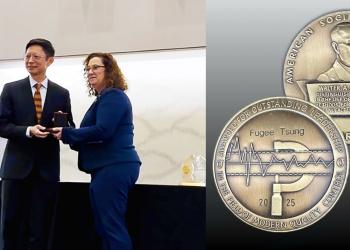Unveiling the Clock of the Universe
Scientists from HKUST and Harvard-Smithsonian Center for Astrophysics discovered new research to observationally distinguish different theories of how the universe first began.
Prof Yi Wang, Assistant Professor of HKUST’s Department of Physics and his collaborators Prof Xingang Chen and Mohammad Hossein Namjoo from the Harvard-Smithsonian Center for Astrophysics and the University of Texas at Dallas note that some heavy particles that are known existing at the birth of the universe can be used as standard clocks. Such “clocks” can be used to measure the passage of time at the universe’s birth.
Their research paper also proposes that the time of every primordial era can be labeled, such that new observations shall be like a movie, which shows in time order how the universe comes from.
“From observing the oscillation of the massive particles, we are able to reconstruct when fluctuations are created in the primordial universe,” said Prof Wang. “Soon, we may be able to verify the evolutionary history toward how our universe was created, which has remained a myth for so long.”
The scientists believe they can answer the questions surrounding the Big Bang, and whether it was caused by inflation or contraction. “The clock signals we are searching for are fine oscillatory structures that would manifest in measurements of the cosmic microwave background – the remnant glow of the Big Bang that pervades all of space,” added Prof Wang.
The findings were accepted by the Journal of Cosmology and Astroparticle Physics.
For more information, please click here.










